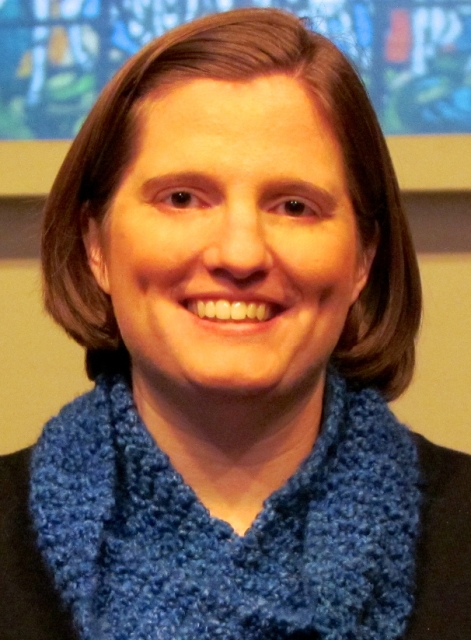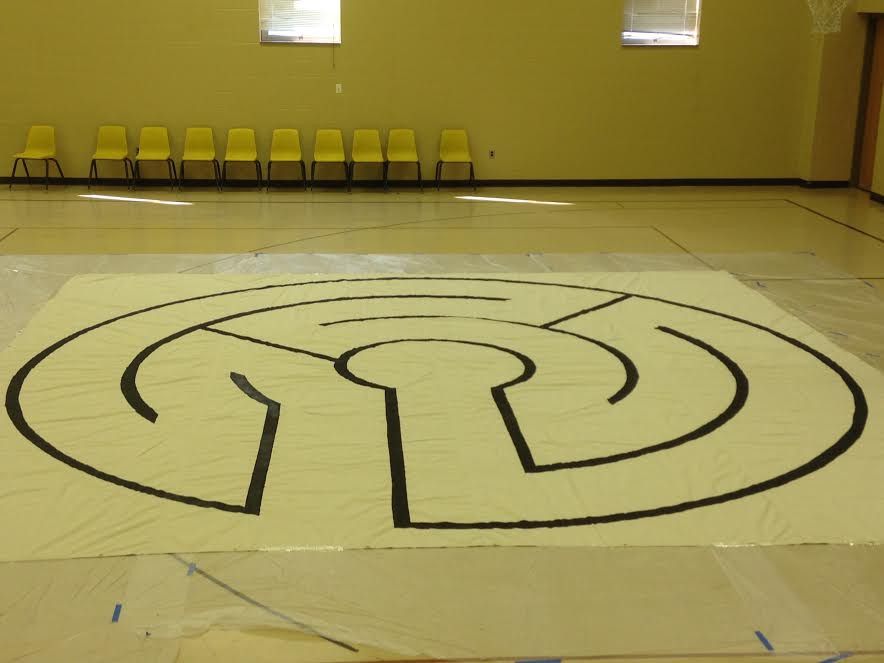By Jeff Brumley
Rita Martin knows a thing or two about prayer as a lifelong Baptist who raised a family in the church.
Or at least she thought she did until this past Maundy Thursday when she participated in a labyrinth prayer session with other members of her congregation at Vinton Baptist Church in Vinton, Va.
Labyrinths vary in size and patterns, but generally feature a maze that participants walk slowly and prayerfully, usually concentrating on a particular verse of Scripture, the name of Christ or another spiritual concept. The practice is growing in popularity among Baptists as they explore unfamiliar spiritual disciplines to deepen their faith.
Pausing at various stations where different Bible verses were posted, Martin said she came to realize her prayer life in general needed to go a whole lot deeper.
Martin said she has “always been a pray-er” but now sees her mind often drifted off during normal prayer times.
The labyrinth “is a very good tool to keep your mind on track and to concentrate on what you’re praying for, and why you’re praying and just communing with God.”
Martin said her Baptist upbringing offered no opposition to the practice, especially after she realized the leavening effect it’s had on her spiritual life overall.
“I’m thinking, why have we never done this before?”
‘Using myself more fully’
Ever since that experience, Martin and other senior members of the congregation have urged Minister to Adults Brittany Riddle to schedule more times when the 20-foot-by-20-foot canvass maze can be rolled out for prayer.
Riddle said the experiment began simply as a theme for the church’s regular Sacred Steps program, which introduces members to a different spiritual practice each month.
Other offerings have included centering prayer, being in the presence of God. “April was labyrinth month,” Riddle said, adding, “This is a very traditional congregation that hasn’t experienced these non-Baptist spiritual practices.”
 Heavy use of the church gym prohibits the canvass from being left out for long, but Riddle said she’s been encouraged by the subsequent interest to incorporate the labyrinth into spiritual formation and discipleship training. The church youth will take it with them on fall retreat.
Heavy use of the church gym prohibits the canvass from being left out for long, but Riddle said she’s been encouraged by the subsequent interest to incorporate the labyrinth into spiritual formation and discipleship training. The church youth will take it with them on fall retreat.
Riddle said she found the labyrinth equally inspiring when she first came across it at Furman University in 2005. Already open to different forms of spirituality, the labyrinth still surprised her.
“I was used to just sitting down, closing my eyes and bowing my head.”
Riddle, who blogged about labyrinth practice last month for Baptist Women in Ministry, said her experience at Furman changed all that for good.
“The experience just opened me up to using myself more fully — using my body, using … my whole self when I pray and try to connect to God.”
Increasing use
That’s also how the labyrinth has been used by Christians down through the centuries.
While the term derives from ancient Greek and is traced to antiquity, in the Christian context labyrinths date back to at least the 12th century when they were included in the floor plans of many medieval European cathedrals. Patterns varied, but the practice usually featured participants praying as they traveled through the mazes. Sessions were often accompanied by music.
 The practice is often described as both an inward and outward pilgrimage experience.
The practice is often described as both an inward and outward pilgrimage experience.
In recent years the practice has become more popular with the decline of denominationalism and as Christians are becoming more spiritually eclectic. A Google search uncovers articles showing labyrinths being used by a variety of Protestant churches — and even at some synagogues.
‘What am I facing next?’
They are beginning to pop up at Cooperative Baptist Fellowship churches, said CBF Executive Coordinator Suzii Paynter.
Paynter knows this because she’s been a frequent user of the labyrinth in the past eight years or so since she came across one at a Houston hospital where a friend was undergoing cancer treatments.
“That first time it struck me, oh my gosh, with this tool I can pray and really find a way of praying through the anxiety and stress of that difficult situation,” Paynter said.
 That hooked her. Nowadays she finds herself on a labyrinth at least every two weeks or so — often using a smart phone app to find them in whatever city she’s visiting on her nearly constant travels.
That hooked her. Nowadays she finds herself on a labyrinth at least every two weeks or so — often using a smart phone app to find them in whatever city she’s visiting on her nearly constant travels.
It’s one of the spiritual practices that keeps her centered in a high-pressure job, making her grateful the labyrinth is catching on in more and more churches.
“They are much more common now,” she said. “Seven or eight years ago, it was kind of hard to find them.”
In that time, Paynter said she’s attended labyrinth retreats and training seminars. One aspect she enjoys a lot is when participants must make a 180-degree turn during the journey through the maze.
“It’s a prayer about ‘what am I facing next? Or what do I need to turn away from? Or what do I need to turn toward?’”
‘More focused’
Like Paynter, Martin said her first experience with the labyrinth has exposed her to a whole new range of possibilities for her prayer life.
She’s among those urging the church to use its maze more often and perhaps even share it with other congregations in Vinton.
“I want that feeling all the time when I pray,” she said.
And it’s had a domino effect on how she prays in church, at home or just walking.
“It’s helped me to stay more focused in my prayer life in general.”
